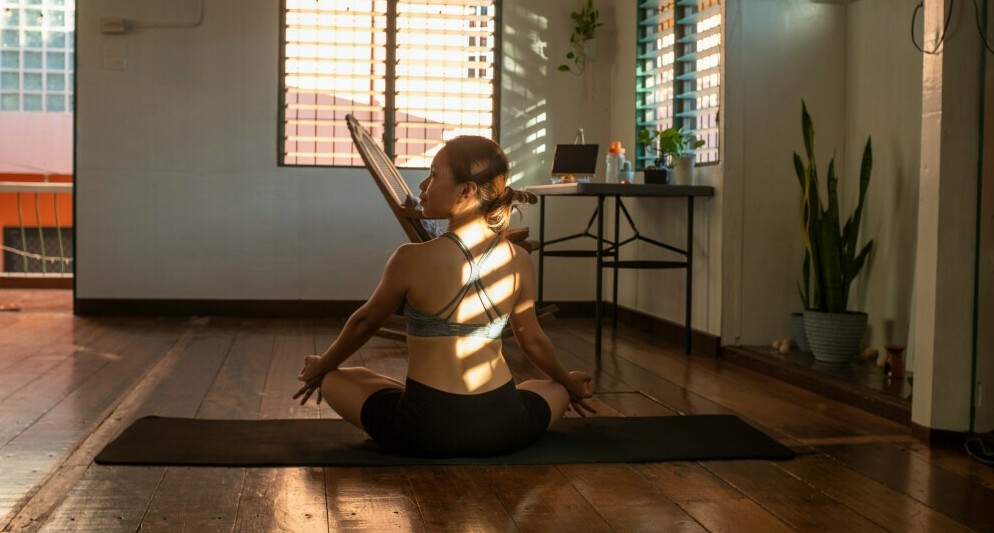
A question I’m mostly asked is “How Do I Meditate At Home?” Meditation isn’t some far-out, mystical thing. It’s about finding calm and clarity in today’s buzzing world. So, let’s break it down.
At its core, meditation is just a practice where you focus your mind to achieve a mentally clear and emotionally calm state. Think of it as a workout for your brain, like hitting the gym but for your thoughts.
There are tons of different types. You’ve got mindfulness meditation, which is all about staying in the moment. Then there’s loving-kindness meditation, focusing on spreading good vibes, starting with yourself. And who can forget transcendental meditation? That one’s about repeating a mantra to find deep relaxation.
Folks who meditate often rave about the perks. We’re talking about reduced stress, improved concentration, and even better sleep. Plus, it’s been shown to help with anxiety and depression. Essentially, it’s like a multivitamin for your mind and body.
Now, let’s clear up some misunderstandings. You don’t have to sit cross-legged for hours or empty your mind completely—it’s okay to have thoughts pop in. Meditation is about noticing those thoughts and letting them pass without getting all caught up. So, let us get back to the question “How Do I Meditate At Home?”
Table of Contents
Preparing Your Space: Setting Up for Success
Finding the right spot at home for meditation is key. Look for a quiet space where you can chill without interruptions. This could be a corner of your bedroom, a nook in your living room, or even a spot in your backyard.
Creating a calming environment helps set the mood. Soft lighting, soothing scents like lavender or sandalwood, and some gentle sounds can make a big difference. Think about dimming the lights or using a salt lamp. Essential oils or incense can add calming scents, and a little nature sound on your phone might help block out the noise.
You don’t need much in terms of gear, but a few essentials can make your practice more comfortable. A cushion or a yoga mat works wonders for maintaining a good posture. If sitting on the floor is tough, a straight-backed chair is just fine. Wear clothes that you can easily move in and won’t distract you.
Reducing distractions is super important for achieving a peaceful state. Turn off notifications on your devices, let your household know you need some quiet time, and make sure to handle any pressing tasks beforehand so your mind isn’t wandering. By making your space feel inviting and distraction-free, you’re setting yourself up for meditation success!
Meditation Techniques for Beginners
Start with breathing exercises. It’s one of the easiest ways to get into meditation and helps you find your rhythm. Sit comfortably, close your eyes, and take a few deep breaths. Focus on your breath coming in and out. Simple, right? It’s all about finding that natural flow and letting it set the tone for your session.
Decide whether guided or unguided meditation works better for you. Guided meditation is like having a coach leading you through the process. There are awesome apps and videos that can walk you through different techniques. Unguided, on the other hand, is more freestyle – you’re on your own, following your own rhythm and thoughts. Try both and see what feels right.
Explore a few popular meditation techniques. In mindfulness meditation, the goal is to stay present. Focus on your breath, a sound, or a sensation. If your mind wanders, gently bring it back. Loving-kindness meditation is all about sending good vibes to yourself and others. Start by focusing on yourself, then gradually extend those feelings to others in your life. Body scan meditation involves focusing on different parts of your body, noticing any tension or stress, and consciously relaxing those areas.
Everyone faces challenges. Your mind might wander or you might feel restless. It’s totally normal. When this happens, just gently bring your focus back to your breath or your chosen point of concentration. Dealing with a busy mind is part of the journey – it’s about practicing patience and persistence.
Building a Sustainable Meditation Practice
Setting realistic goals is crucial. Start with just a few minutes a day and gradually increase the time. It’s like building any other habit – consistency is key.
Incorporate meditation into your daily routine. Link it to something you already do, like brushing your teeth or your morning coffee. This way, it becomes a natural part of your day.
Tracking your progress can be motivating. Use a journal or an app to note how you feel before and after meditating. Celebrate those small wins – they add up and keep you going.
Connect with online communities and resources. Join groups or follow pages where people share their experiences and tips. Sometimes, knowing others are on the same journey makes it easier and more fun.
Final Thoughts on How Do I Meditate At Home?
Thank you for reading my blog “How Do I Meditate At Home?” Meditating at home can be a deeply rewarding practice that fits seamlessly into your daily routine. By creating a dedicated space, setting a regular schedule, and incorporating various techniques, you can cultivate a habit that enhances your mental clarity, reduces stress, and improves overall well-being.
Remember, meditation is a personal journey, and it’s important to find what works best for you. Experiment with different styles and durations, and don’t be discouraged by a wandering mind—it’s all part of the process. With patience and consistency, you’ll discover the profound benefits that meditation can bring to your life and that’s the answer to your question “How Do I Meditate At Home”. Happy Meditating!

